
Somalia is a country located in the Horn of Africa which officially consists of the intra-46th meridian east territory, the seven federal member states, namely Galmudug, Hirshabelle, Jubaland, South West, Puntland, and the municipality of Benadir. It is bordered by Ethiopia to the west, the Gulf of Aden to the north, the Somali Sea and Guardafui Channel to the east, and Kenya to the southwest. With a land area of 637,657 square kilometers, Somalia's terrain consists mainly of plateaus, plains and highlands. Its coastline is more than 3,333 kilometers in length, the longest of mainland Africa. It has been described as being roughly shaped "like a tilted number seven".

Nyeri is a town situated in the Central Highlands of Kenya. It is the county headquarters of Nyeri County and was the central administrative headquarters of the country's former Central Province. Following the dissolution of the former provinces by Kenya's new constitution on 26 August 2010, the city is situated about 150 km north of Kenya's capital Nairobi, in the country's densely populated and fertile Central Highlands, lying between the eastern base of the Aberdare (Nyandarua) Range, which forms part of the eastern end of the Great Rift Valley, and the western slopes of Mount Kenya.

The North Eastern Province is one of the former provinces of Kenya. It had a land area of 127,358.5 km2, with its capital at Garissa. The North Eastern Province was carved out of the then Northern Frontier District (NFD) prior to independence.
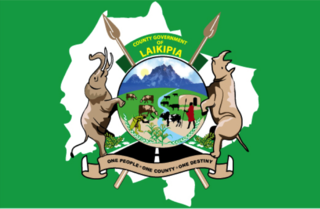
Laikipia County is one of the 47 Counties of Kenya, located on the Equator in the former Rift Valley Province of the Country. Laikipia is a cosmopolitan County and is Listed as County number 31. The county has two major urban centres: Nanyuki to the southeast, and Nyahururu to the southwest. Its County government headquarters town is Rumuruti. The County lies between latitudes 0° 18" South and 0° 51" North and between longitudes 36° 11" and 37° 24' East. It borders Samburu County to the North, Isiolo County to the North East, Meru County to the East, Nyeri County to the South East, Nyandarua County to the South, Nakuru County to the South West and Baringo County to the West.

Narok County is a county in southwestern Kenya with an estimated population of 1,157,873 according to 2019 Census. The dominant ethnic group is the Maasai. Its capital and largest town is Narok, with the only other major urban centre being Kilgoris. Narok County Government was formed by the County Governments Act of 2012 as prescribed in the 2010 Constitution of Kenya. Narok County governor is Patrick Ole Ntutu after winning in the 2022 elections and his Deputy is Tamalinye K. Koech.
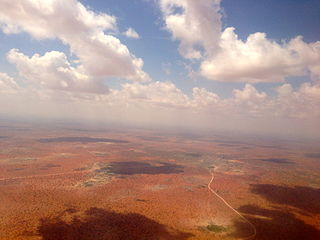
Wajir is the capital of Wajir County in Kenya. It is situated in the former North Eastern Province.

Kwale County is a county in the former Coast Province of Kenya. Its capital is Kwale, although Ukunda is the largest town.
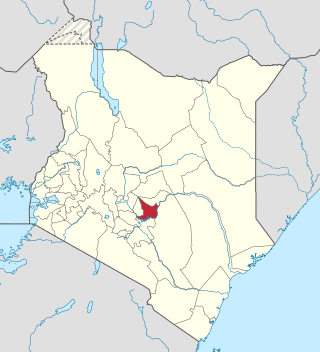
Embu County is a county of the Republic of Kenya. The capital of Embu County and the former Eastern province headquarters, Embu is a large and largely metropolitan area with a population of 608,599 persons. The county borders Kirinyaga to the west, Kitui to the east, Tharaka Nithi to the north and Machakos to the south. The county occupies an area of 2,821 km2.
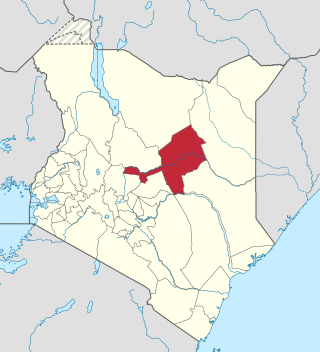
Isiolo County is a county in the former Eastern Province of Kenya. Its population is 268,002 and its capital and largest city is Isiolo. Isiolo County is to be the first county to be developed as part of the Kenya Vision 2030 program. Other upcoming urban centres are: Garbatulla, Modogashe, Kinna, Merti and Oldonyiro. The county is home to Sakuye and Borana tribes but also has a significant number of people from Turkana, Samburu, Gabra, Garre and Meru communities.

Baringo County is one of the 47 counties in Kenya. It is located in the former Rift Valley Province. Its headquarters and largest town is Kabarnet. The county is home to Lake Baringo, Lake Bogoria and Lake Kamnarok.

Garissa County is an administrative county in Kenya. It is located in Eastern Kenya bordering Somalia to the East, Wajir County and Isiolo County to the North, Tana River County to the West and Lamu County to the South. Its capital and largest urban area is Garissa.
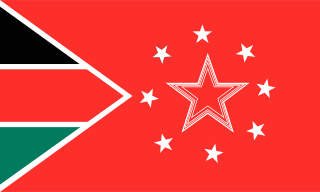
Mandera County is one of the counties in Kenya that has its capital and largest town as Mandera. The county is bordered by Ethiopia to the north, Somalia to the east and Wajir County to the southwest. According to the 2019 census, the county has a population of 1,200,890 and an area of 25,939.8 square kilometres (10,015.4 sq mi). The main economic activity in the county is pastoralism, while others include cross-border trade with Ethiopia, artisanal mining, beekeeping, and agriculture along the Dawa River.

Migori County is a county in the former Nyanza Province of southwestern Kenya. It borders Homa Bay County to the north, Kisii County to the northeast, Narok County to the southeast, Tanzania to the west and south, and Lake Victoria to the west. The county also borders Uganda via Migingo Island in Lake Victoria. The county's headquarter is Migori, which is also its largest town. In the 2019 National Census, Migori County had a population of 1,116,436, almost 200,000 more than the 917,170 recorded in 2009.

Rorya District is a district in Mara Region, United Republic of Tanzania. The district capital is the small town of Ingri Juu, while the largest town is Shirati. The district was created in 2007 from a part of Tarime District. It is bordered by Tarime District to the east, Butiama District to the south, Lake Victoria to the west, and the Republic of Kenya to the north. The majority of inhabitants are from the Luo tribe. Other ethnic group is Kurya. Kine, Simbiti,Sweta and Hacha are sub-groups within Kurya ethnic group.
Kipipiri Constituency is an electoral constituency in Kenya. It is one of five constituencies in Nyandarua County. The constituency has four wards, all of which elect MCAs for the Nyandarua County. The constituency was established for the 1988 elections and borders Olkalou, Kinangop and Gilgil Constituencies. The inhabitants of the constituency are largely of Kikuyu extraction. Its biggest town is Miharati, which acts as the subcounty headquarters. The constituency is largely poor, with a poverty index of below the national average. The main activity for the residents is farming, with cabbages, Irish potatoes, milk, carrots, and onions being the main products. It has poor roads, and receives rainfall for a large part of the year, save for the lower areas bordering Gilgil that are dry.

Lari Constituency is an electoral constituency in Kenya, located in the northwestern part of Kiambu County. The constituency was established in 1966 from Limuru Constituency. Lari borders Kinangop to the North, Limuru to the South, Githunguri and Gatundu North constituencies to the east and Naivasha Constituency to the west. Lari is one of the 12 constituencies in Kiambu County, and is further divided to five wards each electing a representative to the Kiambu County Assembly.
Wajir South Constituency is a electoral constituency in Kenya. Wajir South is one of the six constituencies in Wajir County and one of the largest in Kenya. It is also one of the most neglected, underdeveloped, and unchanged constituencies in Kenya since its creation. The constituency IEBC data shows Wajir South land mass is about 21,424 sq km, hence larger than Central (11,449), Nairobi (696) and Western (7,400) regions combined. The constituency has seven wards Burder Ward, Dadajabula, Ibrahim ure, Diif, Lagboqol south, Habaswein, and Banane ward, all electing Members of County Assembly(MCA) to the Wajir County Assembly. On 27 September 2023, leaders from Wajir South Constituency led by area Mp Mr. Mohamed Adow submitted a memorundum proposing the creation of Wajir South County to the National Dialogue Committee at the Bomas of Kenya in Nairobi. This was sparked by the inequitable distribution of Wajir County resources and allocation of county jobs with Wajir South getting a paltry 5.33% and 4.19% respectively despite accounting 40% of Wajir County.
Wajir Airport is an international airport in Wajir County, Kenya.

Sub-counties, also known as Districts, are the decentralised units through which government of Kenya provides functions and services. At national level, sub-counties take a more administrative function like security, statistical purposes, provision of government services, etc. Even though the sub-counties are divisions of counties, powers to create new national sub-counties lies with the national government. As of 2023, there are 314 sub-counties, compared to 290 constituencies. A deputy county commissioner is appointed by the state to lead each sub-county. The sub-counties are further divided into divisions, locations and sub-locations.
Rhamu, known to the locals as "shantooley", is a town in the Mandera County of Kenya situated in the northeastern part of Kenya,along the River Dawa. The town lies within a semi-arid region characterized by dry and hot conditions, with limited rainfall and sparse vegetation. It is largely populated by the Degodia which forms majority of the Mandera north constituency settling in the wards of Ashabito,Guticha, Rhamu Dimtu,Rhamu town and Garre murule as well as a substantial settlement of somalis. The town was previously built by the british colonial administration.
Rhamu is located at the international border between Kenya and Ethiopia. Due to its proximity to Ethiopia, Rhamu has historically been a center for cross-border trade. Local traders engage in the exchange of goods, including livestock, agricultural products, and other commodities with their Ethiopian counterparts.
















